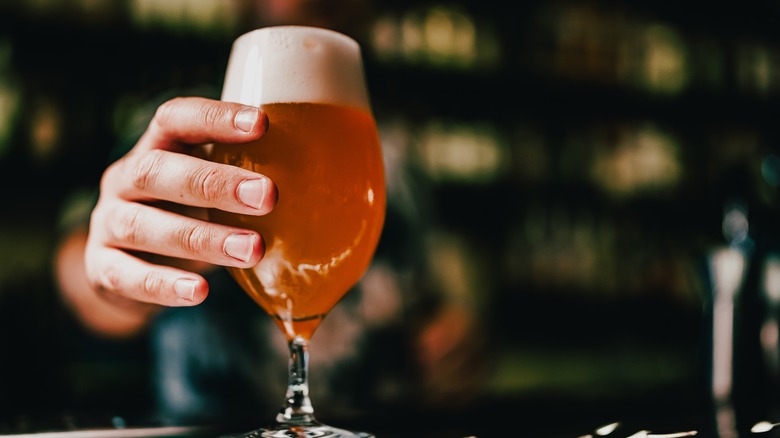What Makes Farmhouse-Style Beers So Unique?
Farmhouse-style might sound like just another modern beer category dreamed up by artisanal brewers, but these beers have a history that far predates the craft beer boom. Farmhouse-style beers originated centuries ago as a way to use up spare crops and quench the thirst of hard-working seasonal farmhands, called saisonniers in French. (Does that word sound familiar?) They were brewed in — you guessed it – farmhouses, using techniques available at the time, like fermenting in open vessels and aging in barrels or casks, plus local ingredients like leftover crops (grains, fruits, and spices) as well as hops and natural yeast.
Farmhouse ale isn't a clearly defined style, but an umbrella term that encompasses many unique sub-styles, each with their own brewing heritage. Farmhouse beers are tied together by their shared traits, including their use of wild yeast, funky flavors, and shared origins, but also by their variances. The regional ingredients in farmhouse ales evoke where they come from, similar to how old world and new world wines are differentiated. Because of the rustic techniques used to make farmhouse beers, each batch and brew is quirky in its own right.
Variance is the name of the game with farmhouse beers
Many trace the origins of farmhouse-style beers back to the French-Belgian region of Flanders, with saison (French for "season") prevailing in Belgium, and biere de garde (French for "beer to keep or guard") in France. While these styles fall under the farmhouse umbrella and have similar origins, their regional ingredients and techniques make them unique — with saisons being known for their light, crisp, hoppy, fizzy, tart and dry attributes, and biere de garde for being funky, rich, and malty, with a subtle sweetness.
Although perhaps not as well-known as their Belgian and French relatives, numerous other styles of farmhouse beers exist across Europe. In the same region, the more rare grisette (French for "little grey") uses malted grain, is dry and citrusy with a subtle peppery bite, and is rumored to have gotten its name from who it originally was served to — coal miners.
In Norway, kveik got its name from a type of speedily-fermenting yeast that often imparts tropical fruit flavors in beer, while a different beer variety, sahti, has rye and juniper notes, with a caramel-colored and cloudy appearance. Swedish Gotlandsdricka translates to "drink of Gotland" and uses regional ingredients juniper and gale, as well as smoked malt, giving it toasty woody and complex bitter notes. Even toastier is keptinis from Lithuania, which translates to "baked," and incorporates baking into the brewing process to create complex and caramelized malt flavors.
Farmhouse beers of today honor old and new
Today, historic farmhouse brewing is being reinvented by craft brewers around the world. Most aren't brewing it in farmhouses anymore (at least on a commercial scale), but are weaving together old techniques with modern ones. Technology that wouldn't have been available in the early days of beer-making, like temperature control and stainless steel tanks make for more safe and consistent brewing, but low-tech methods like wild yeast, using locally-sourced ingredients, open fermentation, and in-bottle fermentation to ensure the beer retains its eccentric feel. Farmhouse beers are not the only ones that draw from these techniques –– other funky beers like lambics use wild, open fermentation too, and subtly-carbonated beers like real ales use in-bottle fermentation as a natural carbonation method.
If you're looking to try a farmhouse-style beer for yourself, they can sometimes be found at craft breweries and specialty shops. The saison category is often easiest to find, including standouts like Stone Brewing Company's Stone Saison, Jolly Pumpkin Artisan Ales iO Saison, and Saison Dupont Forêt. Niche styles like Sierra Nevada's Grisette d'Orge or Fox Farm Brewery's Sahti-Inspired Spontaneous Ale might be harder to find, but are worth the search. The variety is endless when it comes to farmhouse beer, proving it's a style that refuses to be pinned down.


